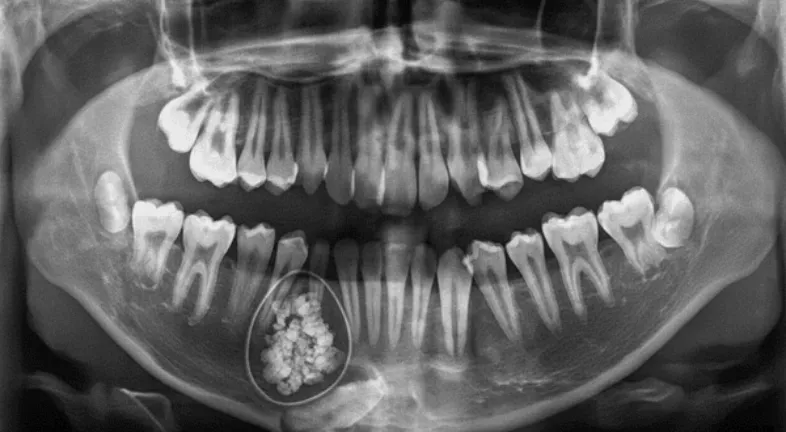
Orthodontic treatment focuses on straightening teeth and enhancing the appearance of your smile. However, like any medical procedure, it comes with potential drawbacks, including the risk of orthodontic emergencies.
Issues during teeth straightening treatment are not always serious complications, but they can still cause discomfort or pain. From loose brackets to broken wires, these problems disrupt your daily routine. However, if you learn how to handle such calamities, you can prevent pain and discomfort.
In this blog, we will explore what orthodontic emergencies are, how to manage them, and when to visit the orthodontist. By the end, you’ll be better prepared to handle such situations calmly and effectively.
Orthodontic emergencies can occur at any time during treatment. These issues may result from an improper diet, injuries, or the natural process of dental adjustments. It's important to be prepared in case something like this happens to you.
A loose bracket is one of the most common orthodontic issues. Brackets, the small metal or ceramic components attached to each tooth, are secured with strong adhesive. However, certain factors can cause them to loosen.
Causes of Loose Brackets:When a bracket becomes loose, it may shift along the tooth or hang from the archwire. This can cause discomfort, irritation to the inner lining of the mouth, or even pain. Since brackets play a key role in aligning your teeth, addressing a loose bracket promptly is essential.

Braces work by placing wires in your teeth and applying constant pressure to reposition them. However, these wires can detach or move around to poke the inside of your cheeks, tongue, or gums.
Causes of Broken or Protruding Wires:
If the wire happens to be protruding or sticking out then you will find that it will start to rubbing in your mouth and may open sores or cuts on the lining of your mouth. This can result in eating and speaking becoming uncomfortable, if you can do it at all, as well as going about your daily business. The good news is that there are steps you can take to help deal with this problem at home until you can get to your orthodontist.
It’s normal to feel irritation when you first get braces. The metal brackets and wires rub against the soft tissues of your cheeks, lips, and gums, leading to sores or small cuts. However, irritation can still happen later in treatment if the hardware moves or shifts.
Common Causes of Irritation:
Sores may feel uncomfortable, but they typically heal on their own. Still, if the irritation becomes too painful, there are several ways to relieve it at home. These methods can make it easier to eat, talk, and go about your daily activities. Clear aligners, like braces, come with their own set of challenges. While they are known for being removable and convenient, they aren’t immune to issues. Knowing how to handle emergencies with clear aligners can save you from unnecessary delays in your teeth-straightening journey.
Here are some common clear aligner emergencies and how to handle them:

One of the most common emergencies with clear aligners is cracking or breaking. Since aligners are made from transparent, thin plastic, they can sometimes crack due to pressure or improper handling.
Possible Causes of Cracked Aligners:Small cracks might not seem serious, but a broken aligner could prevent your teeth from shifting properly. Contacting your orthodontist is the best course of action to avoid treatment delays.
Since clear aligners are removable, it’s easy to misplace them. Losing an aligner is one of the most frustrating emergencies, but it’s also preventable. Aligners are nearly invisible, so if you accidentally set them down on a table or wrap them in a napkin, they can easily get lost or thrown away.
What to do if your aligner is lost:Wearing your previous aligner helps ensure that your teeth don’t shift backward while you wait for a replacement. Your orthodontist will usually arrange for a replacement aligner quickly.
Every time you switch to a new set of aligners, you may feel tightness, pressure, or soreness. This is normal since the new aligner is working to shift your teeth into the desired position. However, this discomfort can sometimes feel intense, especially during the first few days of wearing a new aligner.
How to reduce aligner discomfort:The discomfort typically fades after a few days, but if the pain feels severe or lasts longer than a week, contact your orthodontist for guidance.
Occasionally, new aligners may have sharp edges or rough areas that irritate your gums, cheeks, or tongue. This issue is more common when aligners are freshly manufactured or trimmed improperly.
How to handle sharp edges:
Sharp edges are a minor issue, but they can be uncomfortable. Luckily, smoothing them out is simple and can be done at home.
While it’s impossible to avoid all emergencies, there are steps you can take to reduce the likelihood of experiencing them. Whether you have braces or clear aligners, proper care and attention can prevent common issues like loose brackets, broken wires, or lost aligners.
For those with braces, hard and sticky foods are the most common cause of broken brackets and bent wires. To prevent these issues, avoid foods like:
If you have clear aligners, you should remove them before eating. Aligners are not meant to endure chewing forces, and eating with them can lead to cracks or warping.

Since clear aligners are removable, they are easy to misplace. To avoid losing them, follow these guidelines:
These small habits prevent the inconvenience of losing your aligner, which could result in treatment delays.
Not all orthodontic emergencies require an immediate trip to the orthodontist. Many of these issues can be managed at home with basic tools and simple techniques. Knowing how to handle these emergencies can save you time and reduce discomfort.
If a bracket becomes loose, you’ll want to prevent it from moving around too much. A bracket that shifts or dangles from the archwire can cause discomfort. Here’s what you can do:
Loose brackets may not seem like a big deal, but they can slow down your treatment progress if not fixed. Addressing them as soon as possible is key to staying on track with your treatment plan.
A broken or poking wire can irritate the soft tissues of your mouth. If left untreated, it can lead to cuts, sores, or general discomfort. Here’s how to manage it at home:
Call your orthodontist: Schedule an appointment to have the wire repaired or replaced.
These simple steps can relieve the irritation caused by a poking wire. If the wire is severely bent, do not attempt to adjust it on your own. Contact your orthodontist for further guidance.
Mouth sores are common during orthodontic treatment, especially if the braces are new or have been recently adjusted. Here are a few ways to relieve discomfort at home:
While mouth sores may seem like a minor issue, they can be painful. If they persist for more than a week or seem to be getting worse, it’s best to consult your orthodontist.
When you visit your orthodontist for an emergency appointment, the process is typically quick and straightforward. The orthodontist will assess the problem, make the necessary repairs, and give you instructions on how to avoid the issue in the future.
Here’s what may happen:
Most emergency appointments are quick and stress-free. Addressing the problem early prevents further damage and ensures your teeth continue to move according to plan.
Orthodontic emergencies are bound to happen during your treatment journey, but they don’t have to be stressful. With the right approach, you can manage most issues at home, like loose brackets, broken wires, or cracked aligners. Clear aligners come with their own set of unique emergencies, such as cracks or lost trays, but simple precautions can prevent these issues. Storing aligners properly and avoiding hot water while cleaning can help you avoid most problems.




Curated the best for your knowledge
 Odontomas: What They Are and How They're Treated
Odontomas: What They Are and How They're TreatedSome dental conditions are quiet. Too quiet, in fact. Odontomas fall into that category. They rarely make noise, yet they change things beneath the surface. And people usually have no idea about them. While malocclusions, teeth shifting, discoloration, or other cosmetic dental issues are fairly well known, odontomas are not. So, an odontoma is technically a type of tooth tumor. It’s benign, harmless, but oddly structured. Hence, it can interfere with tooth eruption, displace teeth, or cause swelling. However, there’s more to it. Here’s a deeper dive.
Read More.webp) Gingivitis Treatment: How to Reverse Early Gum Disease
Gingivitis Treatment: How to Reverse Early Gum DiseaseGingivitis tends to creep up quietly, usually after a stretch of rushed brushing or nights where flossing just slips your mind. The first sign is often bleeding when you spit toothpaste into the sink. That moment makes people Google how to cure gingivitis, which is honestly the right instinct. Early gum inflammation happens because plaque irritates the tissue around the teeth. If you respond quickly, it is fully reversible. Most cases improve quickly with proper cleaning, hydration and small tweaks in daily habits. The key is not ignoring those early red or puffy gum signals.
Read More.webp) Metallic Taste in Mouth: Causes and How to Get Rid of It
Metallic Taste in Mouth: Causes and How to Get Rid of ItHaving metal taste in the mouth first thing in the morning can be an unexpected experience. You wake up, take a swallow, and suddenly have a metallic taste in your mouth, as if you'd been chewing on a handful of change. It's annoying, a little scary, and sometimes for no apparent reason. For some people, it will be nothing but a minor nuisance; others may fall into the late-night goose chaser. Sometimes it's a sign that there is something wrong with your braces; other times, it could mean that there is something wrong with one of your teeth. But here's the good news: Most metallic tastes are temporary, harmless, and can be treated or resolved. So let's take a closer look at the possibilities.
Read MoreQuick Links

Heading